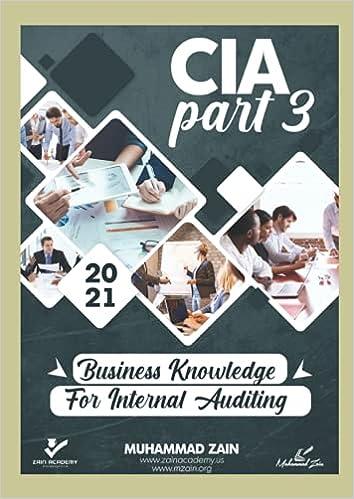Question
Assessment 2 consists of a case study where you will apply financial concepts and theories into real life situations. These case studies will assess your
Assessment 2 consists of a case study where you will apply financial concepts and theories into real life\ situations. These case studies will assess your knowledge of key content areas (Week 1 to 7 contents) and\ will identify further support needs. To successfully complete this assessment please study the material\ provided (lecture slides, tutorials, and reading materials), attend the classes, engage in the units\ activities, and participate in the discussion forums. The nature of this assessment is continuous\ evaluation. This is a group assignment and must be completed in a group of 2 students.\ Each group will be provided with two different companies by the lecturer in class and students\ need to research, identify, and analyse technical issues by locating and exploring information from\ yahoo finance. (Website: https://finance.yahoo.com)\ Question 1 (70 marks):\ i. Find the monthly holding period returns for July 2022 June 2023 for Company 1 AMPOL LTD and ARISTOCRAT LEISURE LTD Company 2\ and the market (MKT) as proxied by the All-Ordinaries index. The monthly holding period\ return is the return you would receive if you bought an asset on the first day of the month\ (opening price) and sold it on the last day of the month (closing price). Using Excel, graph your\ % return results on one graph with returns on the y axis and time on the x axis to enable\ comparison between options. (Use 'Close' rather than 'Adjusted Close' for the selling price.)\ Note: Opening price MUST equal previous month closing price (15 marks).\ ii. For each investment, what is the average monthly holding period return? (8 marks)\ iii. For each investment, what is the annual holding period return? (8 marks)\ iv. Calculate the standard deviation of the monthly rates of return for each share and the\ market (9 marks).\ v. Using Excel plot your results from (iii) and (iv) above with risk on the x axis and return on the\ y axis (5 marks).\ vi. If the 10-year government bond rate is 3.25% and the long-term return on the market is 7%,\ assuming the beta (\\\\beta ) for Company 1 is 1.11 and for Company 2 is 0.95, use the Capital Asset\ Pricing Model (CAPM) to find the expected returns for both companies (8 marks).\ vii. Construct the Security Market Line (SML) showing where Company 1 and Company 2 lie (6\ marks).\ viii. Based on your findings construct a portfolio made up of 60% Company 1 and 40% Company\ 2. Calculate the estimated return and \\\\beta for this portfolio (4 marks).\ ix. Based on your understanding of the CAPM and the SML, which of these asset(s) or\ portfolio(s) would you invest in and which would you not invest in. Explain your choice (7\ marks).\ Question 2 (20 marks):\ a. Scotty Thomson expects to receive the following stream of cash flows from an investment over\ the next 7 years:\ End\ of\ year\ Cash flow\ ($)\ 1 3,000\ 2 6,500\ 3 280\ 4 1,400\ 5 3,000\ 6 0\ 7 10,000\ If Scottys required rate of return is 6% per annum on this investment, how much should he pay\ for this investment opportunity? (4 marks)\ b. Jarrad Waite has purchased a new apartment in North Melbourne for $1.8 million. He plans to\ finance the whole amount of the loan with a loan from the community bank Kanga Kash. Jarrad\ has been offered a 30-year term loan with monthly repayments at a nominal rate of 5% per\ annum. Given Jarrad is financing the whole purchase amount with debt, what will be his\ monthly repayment amount? (4 marks)\ c. Ben Cunnington is planning for his retirement and has $50,000 to invest as a lump sum into a\ retirement investment plan. Ben plans to work for another 35 years before retiring at the age of\ 65 and, as well as the $50,000 lump sum, he plans to deposit $1,500 into a capital secured share\ index fund each month of his remaining working life. He estimates that his retirement account\ will generate an annual return of 7%. Ben plans to retire at 65 and then draw a pension from\ his savings for a further twenty-five years. During this retirement phase Ben expects to be\ investing conservatively and estimates a 5% per annum return. At the age of 90, at the\ completion of the pension, Ben would like to have $200,000 remaining in the account for\ contingencies.\ (i) Calculate the Future Value of the monthly saving deposits and the lump sum deposited\ today based on monthly compounding and a rate of 7% per annum (4 marks).\ (ii) Calculate the annual pension that Ben will receive after retirement, considering the\ requirement to have $200,000 remaining at the end of the pension period. Ben plans to\ receive his first retirement pension payment annually with the first payment occurring\ one year after he retires (8 marks).\ Please note: Another 10 marks are allocated for formatting and references. Details are given in the\ marking criteria and rubric on the following page.
Step by Step Solution
There are 3 Steps involved in it
Step: 1

Get Instant Access to Expert-Tailored Solutions
See step-by-step solutions with expert insights and AI powered tools for academic success
Step: 2

Step: 3

Ace Your Homework with AI
Get the answers you need in no time with our AI-driven, step-by-step assistance
Get Started


